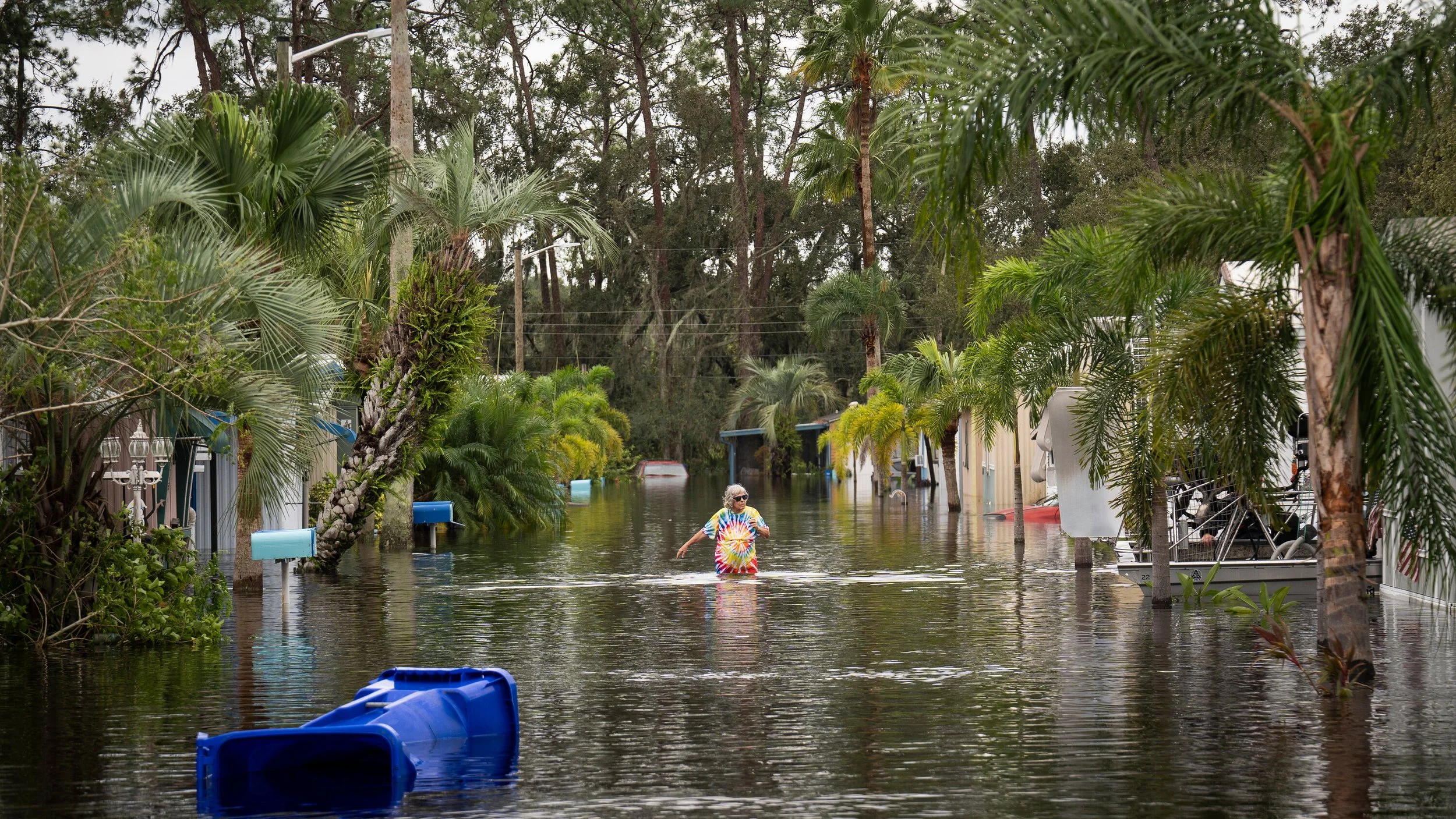Hurricanes, Heat, and the Oceans: Why Helene and Milton Were Just the Beginning
On October 23, 2024, I reported from Florida in the wake of two devastating hurricanes—Helene and Milton—that unleashed record-setting destruction across the Gulf Coast and southeastern United States. These storms weren’t just anomalies. They are warning signs of a new climate reality, fueled by warming oceans and human-driven climate change
Helene: A Storm That Changed the Map
Hurricane Helene formed on September 22 in the western Caribbean Sea and rapidly intensified over the 85°F waters of the Gulf of Mexico. By September 26, it had become a Category 4 hurricane with 140 mph sustained winds—the deadliest U.S. hurricane since Katrina in 2005.
Devastation in Florida
Made landfall in Florida’s Big Bend region
200 miles wide, 140 mph winds, catastrophic storm surge
Claimed 12 lives near Tampa Bay
Flattened homes and flooded entire communities
In St. Pete Beach, I personally witnessed the aftermath. A friend of mine, who stayed in his home despite warnings, had to swim through waist-deep storm surge with his wife and baby to escape. The next morning, boats sat stranded on streets, lifted by the storm surge and deposited inland.
Inland Disaster
As Helene moved north:
Atlanta saw 11 inches of rain, the most in over a century
Western North Carolina was hit by 20 inches of rainfall in three days—a 1-in-3,000-year event
Rivers overflowed, mudslides destroyed homes, and entire communities were swept away
Total death toll:
Helene: 300 dead
North Carolina alone: 124 confirmed fatalities, 92 still missing
Estimated damages: $250 billion
Milton: A Superstorm Like No Other
Just two weeks later, Hurricane Milton became the second most powerful storm ever recorded in the Gulf of Mexico, behind 2005’s Hurricane Rita.
Formed in the Caribbean on October 5
Exploded from tropical storm to Category 5 in 24 hours
Peaked at 180 mph winds over 88°F Gulf waters
Ultimately made landfall in Florida as a Category 3, with 120 mph winds and an 8-foot storm surge
In Sarasota, massive trees toppled, airport terminals lost roofs, and Tropicana Field in St. Petersburg was severely damaged. A record-breaking 126 tornadoes spun off across the Southeast, killing 24 people.
Estimated damage: $50 billion
Rescued in Florida:
565 people from flooded apartment complexes in Clearwater
1,000 residents and 100 animals statewide
Why Is This Happening? The Climate Connection
These storms weren’t just more intense—they were fueled by climate change.
1. Oceans Are Heating Up
Oceans cover 71% of Earth’s surface
They absorb 93% of excess heat caused by human-emitted greenhouse gases
The top few meters of ocean now hold as much heat as the entire atmosphere
NOAA has confirmed that storm intensity has increased by 6% per decade since 1980
2. Rapid Intensification
Helene and Milton both went from tropical storms to Category 4–5 hurricanes within 24 hours. That’s due to:
Record-breaking sea surface temperatures
Warmer ocean depths (even below 2,000 meters), which prevent storms from weakening as they churn up deeper water
Warmer, humid air above oceans holding more moisture, which turns into extreme rainfall inland
3. Rainfall and Flooding
Western North Carolina saw flooding to rooftops
French Broad and Swannanoa Rivers overflowed
20 inches of rain in 3 days devastated the Blue Ridge Mountains region
According to World Weather Attribution:
Climate change increased rainfall from Helene by 10%
Ocean waters fueling it were 2.3°F warmer
Storm winds were 13 mph faster, resulting in 50% more destruction
Sea Level Rise and the Bigger Picture
Ocean levels have risen 8 inches globally over the past 70 years. Scientists project several more feet by the end of the century, due in part to:
Melting ice sheets
Thermal expansion—water expands as it warms, contributing to 40% of sea level rise
Rising seas make storm surges more destructive, flooding areas once considered safe.
The Oceans Can’t Hold This Forever
The oceans have saved us—for now. But they’re reaching their heat-absorption limit.
The top 6,500 feet of ocean are heating 40% faster than scientists previously thought
Heat stored in oceans can linger for decades, feeding future storms
Dead zones (areas with little oxygen) are spreading due to warmer, more acidic water
Fish are migrating north, coral reefs are dying, and shell-forming organisms are struggling in acidic seas
According to the IPCC, the oceans have absorbed the equivalent of 25 billion Hiroshima bombs’ worth of heat between 1971 and 2018. This is not sustainable.
What Needs to Happen
Drastically cut carbon emissions
Transition away from fossil fuels faster than current global trends
Invest in coastal resilience and floodplain protection
Stop building on vulnerable shorelines and barrier islands
Hold polluters accountable and support international climate funding for vulnerable nations
Final Thought
Hurricanes Helene and Milton are not isolated disasters. They are symptoms of a larger climate system under stress. Without serious global action, these storms will become not the exception—but the rule.
The oceans have been forgiving. But their capacity is not unlimited.
We have the science. We have the technology. We do not have the luxury of time.




